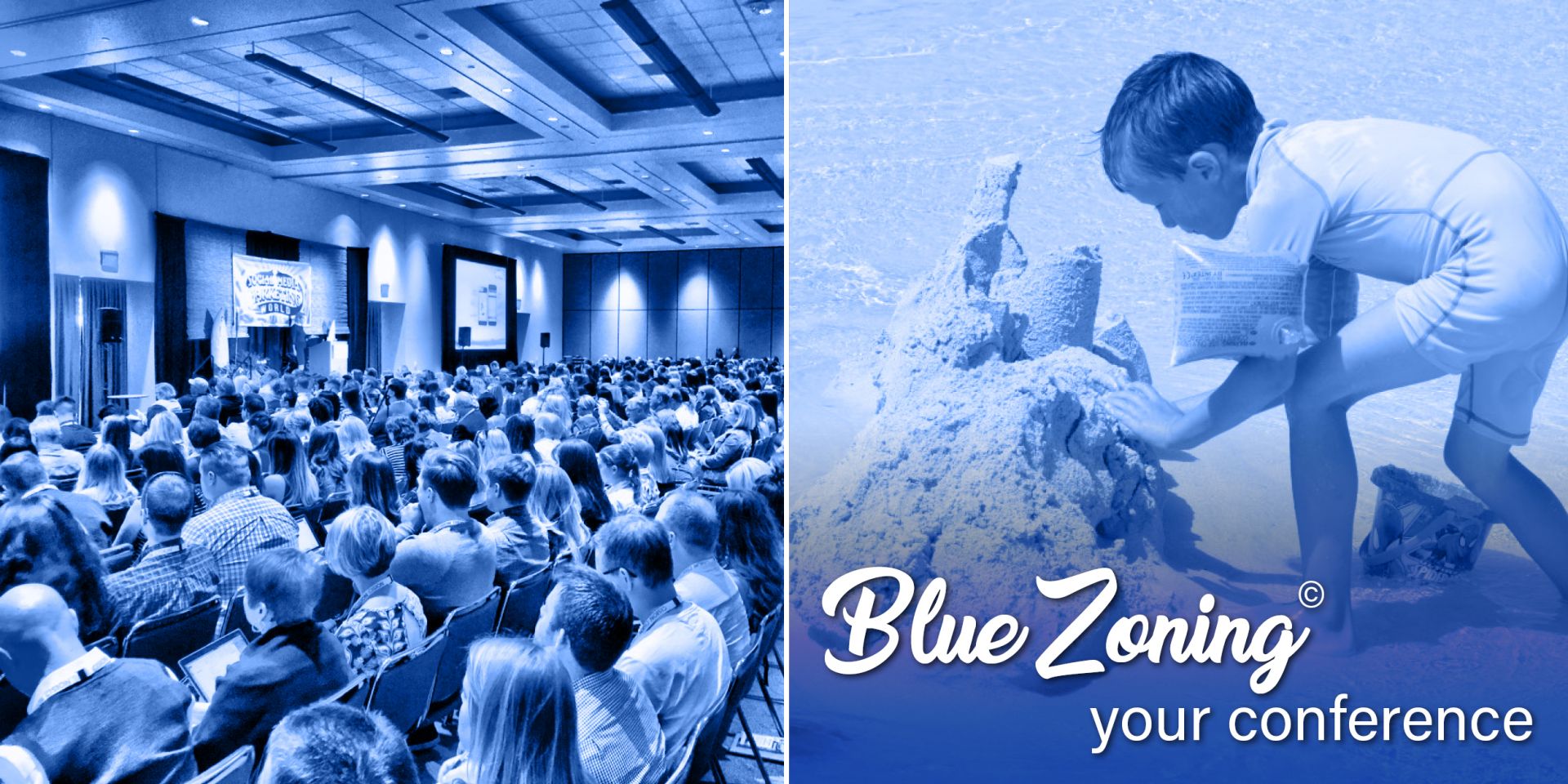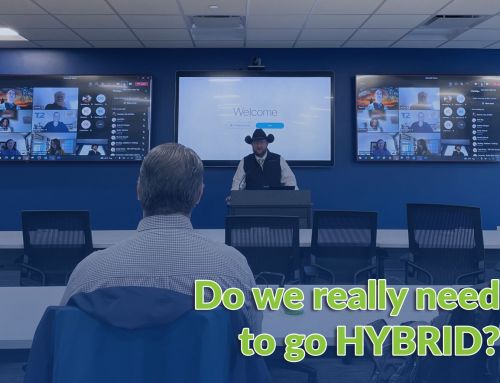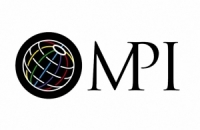I recently attended a medical conference where Dan Buettner, a National Geographic journalist, was a keynote speaker. I had never heard of him before and was instantly enthralled by his message. His work is fascinating! Dan’s November 2005 National Geographic article on longevity, “The Secrets of Living Longer,” was the cover story of one of the magazine’s top-selling issues in history and made him a finalist for a National Magazine Award. Dan has spent 16 years researching and writing about Blue Zones, the areas around the world with the highest concentrations of people who live the longest and healthiest lives. He has interviewed over 250 centenarians and studied their cultures to figure out the nine principles or the Power 9® that result in their longevity. The benefits of their lifestyles summarized in the Power 9® are what led Dan to begin his Blue Zone Project.
Dan’s Blue Zone Project team partners with communities across America to integrate the Power 9® principles to make healthy choices easier through permanent changes to a community’s environment, policies, and social networks; which in turn improves the health and wellbeing of its citizens with incredible results! The strategy focuses on optimizing a healthy environment instead of changing individual behavior. He has implemented the Project in nearly 50 communities throughout the United States so far. In Albert Lea, Minnesota, he successfully raised life expectancy by almost three years for their citizens, decreased tobacco use by 8.3% resulting in $8.6 million savings in health care costs and moved their Minnesota County Health Ranking from 68thto 34th. Beach Cities, California, decreased their direct medical expenses by $21 million, the obesity rate dropped 25% and they collectively earned the highest 2015 Well-Being Index score in the U.S. Fort Worth, Texas, aka Cowtown U.S.A., became a Certified Blue Zones Community after increasing community exercise by over 20%, their Gallup-Sharecare Well-Being Index ranking rose from 185th to 58th and the participants lost over 4,000 pounds collectively, due to the change in the community environment of Fort Worth.
After listening to Dan and the benefits of the Blue Zone lifestyles, I was captivated and wanted to learn more and how to implement his principles into my own life. I am so excited about the benefits this lifestyle offers, I have been sharing them with everyone I talk to and started to ponder how we can optimize the meeting environment in the same way. By incorporating the Power 9® into our conferences and meetings, we can give attendees not only a healthier conference experience, but also the principles to take home and apply to their everyday lives. We as planners can be the catalyst to helping people live longer, healthier lives making them more productive for the companies or organizations hosting the conferences. This is good ROI for everyone!
The Power 9®
1.0 Move Naturally.
Dan’s research has found short term, high intensity workouts are not the most effective for longevity. The longest living people have lifestyles that nudge them to move about every 20 minutes. Whether they are gardening, walking to the store, or visiting a friend rather than calling on the phone, they give up convenience for movement.In a conference we can arrange our agenda to get attendees up and moving more often.
Start the day with a yoga session or group run/walk. Make some breakout sessions walking discussions. End the day with a walking tour of the destination or a dine-around where you walk to different restaurants for each course of the meal. Add some gamification to the conference with step-count contests or awards for extra-curricular event attendance. These activities will also help keep attendees engaged throughout the meeting.
2.0 Purpose.
Knowing and living your purpose for life can add seven years to your life expectancy. Centenarians have a purpose for getting out of bed each day that keeps them motivated and gives them a reason to keep living.
Many people attend conferences or meetings to renew their love of their career or follow a passion they have developed. Cater to this sense of purpose by adding motivational sessions to the standard educational sessions. I don’t mean the standard motivational speaker – think outside the box and get creative when looking for unique motivational speakers in your industry. Find someone in the industry with an incredible story to tell that conveys their passion or purpose and enthuses everyone just by listening to their story. You can also help attendees find what they are good at or what they like to do with motivational networking or mentoring sessions. Being inspired, attendees will leave with a renewed purpose in their life and high praise for the experience you have offered.
3.0 Down Shift.
We all know that stress is very harmful to our health and it is important to take time to relieve stress. Each of the Blue Zones have their own cultural ways of downshifting and relaxing such as: social time at the end of the day with friends or keeping the Sabbath dedicated to disconnecting from electronics and focusing on family and getting outdoors.
Build de-stress sessions into your agenda. Those yoga sessions for movement can double as stress-reduction sessions. Offer guided meditation sessions during breaks or set up nap rooms for people to slip into and grab a quick power nap to recharge. Socializing is also a great stress reliever, so encourage attendance at the receptions and networking sessions as way to down shift at the end of the day.
4.0 80% Rule.
As Americans, we love abundance, especially in our food, but we should all live by the saying, “Eat breakfast like a king, lunch like a prince, and dinner like a pauper.” Across all the Blue Zones, the largest meal of the day is breakfast with dinner being a much smaller meal with no snacking after. The Japanese in Okinawa have a mantra that they say before each meal, “Hara hachi bu,” meaning stop eating when the stomach is 80% full. This keeps their weight under control and reminds them to eat mindfully.
This may be the hardest principle to implement because food is always an important aspect of a conference. It is one thing people usually remember the most and asking people to change their eating habits in a short time period may not be realistic. Some tricks for this principle are using smaller plates, bowls, and cups so portions appear larger; change the evening welcome reception to a breakfast networking gathering; or limit the snacks available throughout the day so attendees aren’t mindlessly eating all the time and look for health options with fresh fruits and vegetables as the best choices.
5.0 Plant Slant.
Most of the centenarians’ diets are plant based. Protein comes mainly from beans, with meat, usually pork, only being eaten about five times per month. Poor diet is related to chronic diseases such as high cholesterol and high blood pressure. However, these diseases can be lessened with improved diet, as proven in Costa Rica where they have the lowest rate of cardiovascular diseases out of all the Blue Zones due to their plant-based diet.
The number of vegetarians and vegans in America is growing and the culinary scene is following their lead. Challenge the catering team to create a primarily plant-based menu that will better satisfy attendee’s hunger and nutrition than the standard continental breakfast or meat-focused dinners. Emphasize healthy beverages such as water, coffee, and tea over sugary substitutes such as soda. The average male can decrease his risk of cardiovascular disease by 60 – 70% simply by consuming six glasses of water a day!
6.0 Wine @ 5.
Alcohol is an integrated part of the culture in the Blue Zones. Drinking moderately and regularly at meals and with friends is a key principle. The polyphenols in red wine have many health benefits when consumed regularly and moderately. Americans commonly have a very different approach to drinking and consume wine in an unhealthy way compared to the moderate drinkers who outlive the non-drinkers in the Blue Zones.
Conferences generally offer opportunities to enjoy alcoholic beverages, so stock the bar with wines that offer high levels of polyphenols to pass along the best health benefits. To moderate drinking, make the networking sessions about more than the open bar. Incorporate group activities and entertainment to take the focus off the bar, but keep the bar available, mostly stocked with the beneficial red wine.
7.0 Belong.
Centenarians almost all focused on their faith. Dan’s research shows that attending faith-based services four times per month will add 4-14 years to your life expectancy. The benefits come from building a strong social network of both family and friends through attending religious services leading to good mental and physical health.
Be creative in how you can incorporate faith into a meeting. Offer nondenominational services in the mornings, faith-based meetups in the evenings, or maybe even a prayer room for attendees to visit at their leisure. Include local church information in your meeting materials for those who would like to attend a local service. Take into consideration any religious holidays that may be happening during your meeting and see if they can be incorporated into the additional offerings.
8.0 Loved Ones First.
Families are first and foremost in all the Blue Zones. Taking care of aging parents, being in a committed relationship, and investing in children all add years to your life. Centenarians purpose often revolves around their families keeping them engaged in the family’s daily lives as well as younger generations seeing them as vital for the wisdom they have to offer.
Think Bliesure. Make your agenda family friendly by incorporating activities pre-conference, post-conference, or during the day for families to attend as part of a vacation along with the business that needs to be done. Use the attributes and attractions of your destination to make the trip appealing to more than the primary attendees. Plus, you can add some extra revenue to the budget by selling these activities.
9.0 Right Tribe.
Centenarians all have social circles that support their healthy behaviors. Friends are interested in our health and well-being, increase our happiness, help reduce stress, and support our sense of purpose. Finding the “right tribe” is critical to our long-term health.
Social circles greatly influence our behaviors. Help attendees find their best tribe by having more meaningful networking sessions that will provide opportunities to find like-minded peers or mentors they can connect with. Break-down networking spaces into interest-focused group spaces. Mix-up breakout sessions with group discussions for attendees to have open, honest conversations. Find ways to foster these connections in your community before and after the conference. Our internet connected world offers so many ways to stay in touch, mentoring can continue long after the first connections are made.
We all want to live long lives as long as we can be active and healthy, I know I do! According to Buettner: “To make it to age 100, you have to have won the genetic lottery. But most of us have the capacity to make it well into our early 90’s and largely without chronic disease. As the Adventists demonstrate, the average person’s life expectancy could increase by 10-12 years by adopting a Blue Zones lifestyle.” According to my Blue Zones True Vitality Test I can extend my life by 15.1 years by adjusting my lifestyle with the Blue Zones Principles.
As a meeting planner, you have an incredible opportunity to pass these benefits on to your attendees. Get creative with your next meeting and provide additional value to your attendees by incorporating the Power 9® principles into your planning. Use pre-conference materials to educate them about new opportunities offered, distribute educational materials during the meeting, and follow up after with additional information or opportunities that will keep them engaged into the future. Leave them with an experience they will benefit from long after the last session.
About the author:
Genevieve Kulaski grew-up in Missoula as a true Montana kid, camping all summer and skiing all winter. Wanting to see the world, she took off after high school. She started out exploring Colorado while attending CU Boulder, studied abroad in Russia, and then continued her travels while serving in the Air Force after college graduation. She landed in Washington D.C., but only for a short while, because she met her Montana cowboy who convinced her to move back home. There is truly no place like home! They spent a few years in Bozeman where Genevieve worked as a destination management specialist helping groups explore the beauty and unique experiences the Greater Yellowstone Area has to offer. They are now raising their three kids on the family ranch outside of Philipsburg and Genevieve continues to explore the state for those can’t-miss experiences. Genevieve loves sharing her home state with visitors and putting together one-of-a-kind Montana events that leave everyone with memories to last a lifetime.
Genevieve is a certified meeting planner and has acquired a certificate in virtual event and meeting management. Please feel free to contact her with any questions: gkulaski@meetingsnorthwest.com








